new posts in all blogs
Viewing: Blog Posts Tagged with: YA nonfiction, Most Recent at Top [Help]
Results 26 - 50 of 59
How to use this Page
You are viewing the most recent posts tagged with the words: YA nonfiction in the JacketFlap blog reader. What is a tag? Think of a tag as a keyword or category label. Tags can both help you find posts on JacketFlap.com as well as provide an easy way for you to "remember" and classify posts for later recall. Try adding a tag yourself by clicking "Add a tag" below a post's header. Scroll down through the list of Recent Posts in the left column and click on a post title that sounds interesting. You can view all posts from a specific blog by clicking the Blog name in the right column, or you can click a 'More Posts from this Blog' link in any individual post.
Josephine: The Dazzling Life of Josephine Baker. Patricia Hruby Powell. 2014. Chronicle. 104 pages. [Source: Library]
I definitely enjoyed reading Josephine: The Dazzling Life of Josephine Baker by Patricia Hruby Powell. I loved that this biography is told in verse. The book essentially looks at her entire life, not all biographies for young readers take the time and make the effort. By focusing on her entire life instead of just one or two moments where she shined or triumphed, readers get a greater glimpse of who she was and what she wanted. The book has highs and lows, of course, presenting many challenges that faced her throughout her life. The book sought to capture her spirit, her personality. I think it succeeded. The book also, in my opinion, gives readers a good sense of the times in which she lived.
I also loved the illustrations by Christian Robinson. I suppose you could even say I loved, loved, loved the illustrations. They add so much to the book! They seem to capture movement and fun. They definitely compliment the text well. Together they give readers a spirited look at the past.
© 2014 Becky Laney of
Becky's Book Reviews
World War I for Kids: A History with 21 Activities. $. Kent Rasmussen. 2014. Chicago Review Press. 192 pages. [Source: Review copy]
World War I, or "The Great War," is a complex subject or topic. It can be difficult for adults to understand at times. I thought Rasmussen did an admirable job in simplifying it for middle grade readers in his World War I for Kids. He breaks the war down into twelve chapters:
- The Road to War
- Stalemate on the Western Front
- Trench Warfare
- Other Fronts
- The Weapons of War
- The War at Sea
- The War in the Air
- Animals Go to War
- Enter the United States
- The Home Fronts
- Ending the Fighting
- Beyond the Armistice
Each chapter has at least one activity associated with it. For example, the first chapter, "The Road to War," the activity is making a military recruiting poster. The activities vary, which, in my opinion, is a very good thing. Other activities include: writing a poem about the war, pressing flowers to send home from the war, reading a world war I era adventure novel, making parachutes and gas masks, training a dog to carry a message, cooking "Maconochie Stew." There are twenty-one activities in all.
I found the book to be informative, very well-researched. The layout was nice as well, plenty of photographs and maps. It is always important for nonfiction to be as appealing as possible. As I was reading it, a few Horrible Histories sketches came to mind, which was good fun.
© 2014 Becky Laney of
Becky's Book Reviews
Show Me A Story! Why Picture Books Matter. Conversations with 21 of the World's Most Celebrated Illustrators. Compiled and edited by Leonard S. Marcus. 2012. Candlewick. 304 pages. [Source: Review copy]
Show Me A Story! Why Picture Books Matter is a collection of interviews. Leonard S. Marcus has spent decades interviewing illustrators. In this collection, he shares his interviews with 21 illustrators. Some of the illustrators are also authors. The long list includes: Mitsumasa Anno, Quentin Blake, Ashley Bryan, John Burningham, Eric Carle, Lois Ehlert, Kevin Henkes, Yumi Heo, Tana Hoban, James Marshall, Robert McCloskey, Helen Oxenbury, Jerry Pinkney, Chris Raschka, Maurice Sendak, Peter Sis, William Steig, Rosemary Wells, Mo Willems, Vera B. Williams, and Lisbeth Zwerger. Chances are that if you've read any picture books in the past thirty years, you'll recognize a name or two from the list. I'll be honest, there were a few on the list who were new to me.
It is a book of interviews. Some of the interviews are older interviews. Some are newer, of course. Some interviews cover a greater number of books than others. A few just discuss the latest (at-the-moment) picture book published. Others do a better job of covering an artist's career, of touching on many, many books--often beloved books. In my opinion, the interviews vary in quality. I think some people felt more comfortable than others during the interviews. Some interviewees really gave it their all, and were very open and outgoing. Some interviewees I felt held back and were more reserved. It seemed like he had to really work hard to get answers from some. By far my most favorite, favorite, favorite interview was with James Marshall.
What I appreciated in this book is the discussion, the emphasis on how important picture books are, on how important good, quality art is in picture books.
Favorite quotes:
Picture books tell stories in a visual language that is rich and multi-leveled, sophisticated in its workings despite its often deceptively simple appearance. It is through the book's images that a child first understands the world of the story--where it is set, when it takes place, whether it's familiar or new. They read the characters' emotions and interactions in facial expressions and body language. They may notice secondary pictorial story lines happening alongside the main action, like a secret for them to follow. And nowhere is visual humor explored more fully than in the picture book. ~ David Wiesner
In my books, I don't want to teach. What I have done might better be described as "teaching without teaching"--providing the conditions that allow children to learn for themselves. ~ Mitsumasa Anno
Before I decided to go there [Cambridge], I thought, If I go to an art school I might stop reading, whereas if I go to university I know I won't stop drawing...as an illustrator, reading is an important part of what I do, so I think it turned out to be good training. ~ Quentin Blake
A picture book becomes a whole world if it's done properly. I'm very surprised that sometimes people don't understand this, or realize that the picture book is a true art form. ~ James Marshall
A good ending is inevitable, but it's also a surprise. ~ James Marshall
I'm quite suspicious of books that set out to teach things. A picture book, after all, is primarily a stepping-stone to reading. That is what one hopes will happen in the end. What a book must do is to make a child want to read it, to make him think: "Oh, gosh, now what's going to happen?"--and turn a page. ~ Helen Oxenbury
© 2014 Becky Laney of
Becky's Book Reviews
Shipwreck at the Bottom of the World: The Extraordinary True Story of Shackleton and the Endurance. Jennifer Armstrong. 1998. Random House. 144 pages. [Source: Library]
Just imagine yourself in the most hostile place on earth. It's not the Sahara or the Gobi Desert. It's not the Arctic. The most hostile place on earth is the Antarctic, the location of the South Pole--what's the difference? The Arctic is mostly water--with ice on top, of course--and that ice is never more than a few feet thick. But under the South Pole lies a continent that supports glaciers up to two miles in depth. Almost the entire southern continent is covered by ice. The mammoth icecap presses down so heavily that it actually distorts the shape of the earth. The ice never melts; it clings to the bottom of the world, spawning winds, storms, and weather that affect the whole planet. I have read Jennifer Armstrong's Shipwreck at the Bottom of the World three or four times now. The narrative is so strong and compelling, and, yes, even inspiring. It is definitely one of my favorite nonfiction books. And nonfiction isn't something I usually take the time to reread.
Originally published in 1998, Shipwreck at the Bottom of the World won the Orbis Pictus Award in 1999. The book follows "the extraordinary true story of Shackleton and the Endurance." If you are unfamiliar with this story, then you really SHOULD read this one. It is a great introduction to the subject. Chapter by chapter, the book follows Shackleton and his men on their journey to Antarctica. Almost from the start, there are indicators that their goal, their quest, will not be an easy one to achieve. After a series of mishaps--thanks to nature--it becomes a long fight to survive. The story is simple and yet dramatic. I think the story would be gripping no matter who told it. But I do think that Jennifer Armstrong did a wonderful job in painting a very human picture of Shackleton and his crew. I think the ending was beautiful--very moving! This one is a book I think
everyone should read.
© 2014 Becky Laney of
Becky's Book Reviews
Meet Me in St. Louis: A Trip to the 1904 World's Fair. Robert Jackson. 2004. HarperCollins. 144 pages. [Source: Bought]
Meet Me in St. Louis is a fascinating book about the 1904 World's Fair. I found this nonfiction book for young readers to be entertaining and wonderful from cover to cover. It was well-organized. The narration was great--never a dull moment. It was detailed. If you love discovering "I didn't know that?!" facts, this is one to treasure. I found myself wanting to find people to enlighten. I learned so much from reading it.
Chapter one is a direct appeal to readers. Jackson writes in second person. He wants YOU to join him at the fair. This chapter gives a brief overview of the fair, inviting you to "experience" it through your five senses.
"The giant wheel lurches into motion; you hold your breath and feel yourself moving. How is it possible for such a large car, stuffed to the gills with sixty people, to rise into the air like this? You bravely take a first peek out the windows. Off to the near right, you spot the Abraham Lincoln Exhibit, which houses the actual log cabin where Lincoln lived as a child in Kentucky. Then the rolling gardens and peaceful ponds of the Japanese Pavilion opens up in front of you. A bit higher and you can see all of the Jerusalem Exhibit, a miniature version of that Middle Eastern city filled with replicas of ancient buildings. Can this be St. Louis, or have you been transported to a whole new world?" (10)
Chapter two chronicles the preparation and construction.
Chapter three tells of opening day.
Chapters four and five tells of buildings and exhibits. It tells about each of the palaces at the World's Fair. There was, for example, the palace of mines and metallurgy, palace of varied industries, palace of education and social economy, palace of fine arts, palace of liberal arts, palace of manufactures, palace of transportation, palace of electricity and machinery, palace of agriculture, palace of horticulture, palace of forestry, fish, and game. One of my favorite places to read about was the Model Playground.
Chapter six is a great for capturing the unique entertainments. It focuses on "the Illusions on the Pike." Jackson writes,
"Plays, concerts, circus tricks--more than forty different shows were staged in all, some in theaters and others right in the center of the wide walkway. Fifteen hundred animals, from zebras to polar bears, lived on the Pike during the fair, and many of them were entertaining performers too. Without a doubt, the Pike was the loudest area on the fairgrounds. Dozens of men called "spielers" or "barkers" shouted into megaphones for hours, trying to attract people to rides and shows." (73) This chapter also mentions Geronimo. "He signed autographs for ten cents each; depending on his mood, the price for his photograph ranged between fifty cents and two dollars. Geronimo would even sell his hat for the wildly expensive price of five dollars--then coolly pull a new one from under the table, place it on his head, and wait for another buyer." (83)
Chapter seven focuses on the debut of the Ferris Wheel, or "Observation Wheel."
Chapter eight is titled, "Faces of the Fair." I thought this was a well done chapter that examines, with honesty, the diversity of the Fair; in many places, it addresses racism and exploitation. The fair, as we've read so far, may have been educational, and it may have been FUN, but, it wasn't always fair and just.
"While blacks were not the only minority group treated with disrespect, at least they were free to boycott the fair if they wanted. Others were not able to protest. Several ethnic groups had been brought from their homelands to St. Louis--in some cases by force. Men, women, and children were put on display so that fairgoers could take a first-hand look at them and, in theory, learn about their cultures. The largest of these "anthropological" exhibits came from the Philippines. Hundreds of exploited Filipinos lived on the fairgrounds in open huts and flimsy thatched cabins. Cramped and filthy, the housing offered almost no privacy. The Filipinos were forced by fair managers to sit quietly while crowds of curious visitors gawked at them; they were also told to sing, dance, and perform other activities against their will. Instead of learning about the Filipinos and gaining respect for this culture, most fairgoers concluded they were a primitive race of inferior beings." (100)
And later from the same chapter,
"Some people were disturbed by the exploitation of ethnic groups, including a magazine reporter named Laura Ingalls Wilder. Long before the Little House on the Prairie books made her a well-known children's author, she traveled from her home in southern Missouri to write about the fair. Wilder enjoyed the palaces, foreign buildings, and the Pike, but she was appalled by the mistreatment of many of the foreign and Native American people. She reportedly even tried to stop exhibitors from forcing them on display. One day, a young man from Africa was being exploited during a typically cruel stage show. Wilder stood up in the middle of the audience and demanded that the show stop immediately." (103-4)
Chapter nine is about "special events." The chapter covers many such events. But the BEST, BEST, BEST part of this chapter is devoted to the 1904 Olympic Games in St. Louis!!! There were a dozen little things that I found fascinating in this section. At least a dozen!
"Because the Games were fairly new--and therefore disorganized--many bizarre and amusing things happened. After a disagreement over who won the fifty-meter race, two swimmers got into a brawl and just agreed to race again. There was no such thing as instant replay in 1904, of course. And American gymnast George Eyser ambled off with five medals, including two golds, after competing with a wooden leg. He had lost one leg after being run over by a train years earlier." (114)
And
"A pair of Zulu tribesmen, Len Taunyane and Jan Mashiani, became the first African athletes to compete in the Olympics, even though they were supposed to be part of the Boer War Exhibit. Taunyane might have won, but a fierce dog chased him nearly a mile off course, and he finished in ninth place." (116)
Chapter ten focuses on the last days of the fair.
I would definitely recommend this one!!
© 2014 Becky Laney of
Becky's Book Reviews
Mountains Beyond Mountains: The Quest of Dr. Paul Farmer, A Man Who Would Cure the World. By Tracy Kidder. Adapted for Young People by Michael French. 2013. Random House. 288 pages. [Source: Review copy]
Some books are intimidating to review. They just are. Such is the case with Mountains Beyond Mountains. The book I read was the "adapted for young people" edition; it was adapted by Michael French. The book is good, very good. The subject is serious, but, the style is personal. The subject of the book is Dr. Paul Farmer. The book is not always in chronological order, but, essentially by the time you're done, you've got a good grasp on who he is, what he does, why he does it, how he grew up, how he balances (or not) his personal life and professional life, etc. The book seems very well-researched and quite detailed. I'm not sure all those personal details were essential. For example, I'm not sure readers need to follow every little fight he had with an ex-girlfriend and how that relationship developed and fell out. I suppose, it was interesting to have another strong opinion as to what he was like to be around on a day to day to day basis, but, was it essential? I'm not sure. The book chronicles decades worth of work, mainly but not exclusively in Haiti. There is a lot of discussion about infectious diseases: how to treat them, how to make the most effective treatments available to everyone, how to decide who gets what and who pays what, etc. TB-MDR, HIV, AIDS among others.
The book has an honest, open approach to it. Many parts are narrated by the author who, over the years, accompanied him various places, observed him working and interacting, traveled with him to various conferences, etc. The author, of course, also was in contact with him at other times through email. The author, again, had access to interview those closest to Farmer. The book definitely reflects this.
I would recommend this one.© 2014 Becky Laney of
Becky's Book Reviews
The Boy on the Wooden Box by Leon Leyson. 2013. Simon & Schuster. 240 pages. [Source: Library]
Definitely loved this memoir! I would definitely recommend it to anyone interested in reading about the Holocaust. The story begins in the late 1930s in Poland, and continues on through the war to liberation. It is the story of a young boy and his family--many members were saved by Schindler, however, not all of them, for not all lived in the same community and had the same opportunities to come and work for Schindler. Still, it seems miraculous that so many of his immediate family WERE saved, and did survive the war despite all the horrors and hardships and unknowns. Leon Leyson's memoir is powerful and compelling, just what you'd expect. But it was also thoughtful and age-appropriate. It did a good job in providing details and experiences, grounding this very human story into history.
There was just something about it that I LOVED. He could reflect with love and affection on the people he loved and respected; he seemed to hold onto the good of his past, the little things and the not-so-little things that made his childhood what it was. He did this without negating the things that were painful and bitter and just as true. The narrative voice was so strong and wonderful in this one.
© 2014 Becky Laney of
Becky's Book Reviews
The Giant and How He Humbugged America. Jim Murphy. 2012. Scholastic. 112 pages.
The Giant may not be Jim Murphy's best work of nonfiction, it is still a mostly interesting account of an American hoax in the nineteenth century. The opening chapters tell an unfolding story of the discovering of the petrified giant and its immediate local success. The first fifty pages or so stay in the moment, the rest of the book, on the other hand, chronicles the hoax from beginning to end revealing the intent, showing how it was carried out, detailing all the people involved, following the story from its local beginning all the way around its tour. It does provide a behind-the-scenes look at supposedly "clever" deceivers, and the supposedly gullible audience that "should" have known better. I didn't particularly like learning about these (slimy) characters. But the story revealed wasn't uninteresting. But there were parts of the narration I just didn't care for. (I am not sure it was the author's intent to be condescending in matters of faith, but it didn't feel right to me either.)
Read The Giant And How He Humbugged America
- If you like nonfiction for tweens and/or teens
- If you like Jim Murphy
© 2013 Becky Laney of
Becky's Book Reviews
A Passion for Victory: The Story of the Olympics in Ancient and Early Modern Times. Benson Bobrick. 2012. Random House. 160 pages.
I definitely enjoyed reading Benson Bobrick's A Passion for Victory: The Story of the Olympics in Ancient and Early Modern Times. In this nonfiction book for children and teens, Bobrick chronicles the Olympic games.
In the first two chapters, Bobrick focuses on the Olympic Games in Greek and Roman times. He gives just enough detail to be fascinating. The games were definitely quite different than modern games! Including the fact that the boxing, I believe, could prove to be to the death.
Chapter three focuses on the movement in the nineteenth century to bring back the Olympic games. Chapter four focuses on the first few Olympic games of modern times: 1896 (Greece), 1900 (Paris), 1904 (St. Louis, Missouri). The 1900 and 1904 games were not ideal because of their combination with World Fairs. For example, the book points out that they spread out the events over five and half months. No opening or closing ceremonies. Not that the games were all bad, by any means. This was the first Olympics offering women's events (tennis, croquet). And archery, diving, and rowing made their debut. In fact, it seems like almost every Olympics held offered new sports, new events. (Similarly, some might disappear.) The 1904 games only had participants from twelve countries, but, most of the athletes were American, which could be why America won over 200 medals that year. If the 1900 games were too long--five months--the 1904 games might arguably have been too short--just six days! The chapter also focuses on prejudices and such bringing up the World's Fair and the exhibitions.
The marathon also included the first black South Africans (two Tswana tribesmen) to compete in the Olympics--though they weren't supposed to be in the race at all. They were part of the Boer War exhibit but had joined the race for fun. Even so, one finished ninth, and the other came in twelfth. The first to arrive at the finish line was Frederick Lorz, who had actually dropped out. (After the first nine miles, he had flagged down his manager, who gave him a lift for the rest of the way in his car.) But when he crossed the finish line on foot, he was hailed as the winner. He was soon found out, of course, but the real winner, Thomas Hicks, (a Briton running for the United States), deserved the prize even less. He had been doped up by his trainers, who gave him a near-fatal dose of strychnine sulfate mixed with egg yolk and brandy. Unable to cross the line on his own, he had to be supported in the last stretch and was rushed to a hospital, where he spent several days in intensive care. (65)
The fifth chapter chronicles the Olympic Games of 1908 through 1932. It also highlights the 1906 Intercalated Olympic Games. This one-time event gave the games new life. It was here that the opening ceremony and closing ceremonies made their debut. Several paragraphs--or several pages--are dedicated to each Olympics. All fascinating stuff! I couldn't hope to cover it all! Readers learn how each Olympics helped contribute to the Olympics we have today. For example, the 1920 Olympics set in place many lasting traditions including the Parade of Nations in the opening ceremonies and the medal ceremonies with the raising of the flags for the three winners and the National Anthem for the gold medal winner. Of course, some attention is paid to the athletes and winners. The star of this chapter, in my opinion, is Jim Thorpe.
The sixth chapter focuses on the 1936 games in Berlin, and the star, as you might have guessed, i
The Pregnancy Project: A Memoir. Gaby Rodriguez and Genna Glatzer. 2012. Simon & Schuster. 224 pages.
I'm not really sure how to rate this one.
Did it hold my attention/interest? Yes.
Was it a quick read? Yes.
Was the back story a little too long--in other words, does it take half the book to get to the project itself? Yes. Some of the back story was important. But was it half-the-book important? I'm not sure.
Did the writing get a little preachy? Yes. At times. The whole book was about how people shouldn't stereotype other people. And how if people make mistakes, you shouldn't keep banging them...more I'm not really sure what to say about this one. It is a book based on a true story; there is also a movie about this 'project.'
Did it hold my attention/interest? Yes.
Was it a quick read? Yes.
Was the back story a little too long--in other words, does it take half the book to get to the project itself? Yes. Some of the back story was important. But was it half-the-book important? I'm not sure.
Did the writing get a little preachy? Yes. At times. The whole book was about how people shouldn't stereotype other people. And how if people make mistakes, you shouldn't keep banging them on the head with those mistakes and pounding in your judgments over and over and over again. You should be more supportive and encouraging. The other message, perhaps, is that you can overcome the negative messages that surround you. If your parents, siblings, family members, teachers, friends, enemies, whoever, are telling you that you're worthless and can't do something and that you'll never ever ever ever ever get anywhere in life, then you don't have to believe it and stay trapped in that. You can be better than what others say you can be.
Were the messages good ones? Yes, for the most part. Not truly new or original, but practical enough I suppose that you can always hear them one more time.
Could the author get a little annoying with her judgments? At times. I won't lie.
Is it the best-best-best book ever written? No. Of course not. It is what it is. It is straight-forward, nothing deep or literary. The prose won't amaze you. You probably won't be gushing about this one.
But did it overall interest me until the end? Yes. For the most part.
Generally speaking, this one had plenty of details, just not the exact details I was hoping for. I wanted more details on the project itself. How she really went about faking the pregnancy day by day, week by week, month by month. What effect this truly had on her relationships--not just the summing up at the very end. In the end, this one definitely was all about tell and not much showing.
So how do you rate a book that held your interest well enough but isn't that breath-taking in the end?Read The Pregnancy Project- If you're looking for a YA memoir
- If you're curious to learn more about Gaby Rodriguez; the story leading up to her fake-pregnancy-project
© 2012 Becky Laney of
3 Comments on The Pregnancy Project (YA), last added: 4/27/2012
Six Days In October: The Stock Market Crash of 1929. Karen Blumenthal. 2002. Simon & Schuster. 160 pages.
From the introduction:
The years after the First World War were a golden age for many Americans. The 1920s didn't just sing with the rhythms of jazz, or swing with the dancing of the Charleston; they roared with the confidence and optimism of a prosperous era. While I've read plenty of historical fiction set within the Great Depression time period, this is the first nonfiction book I've read (at least that I can remember) that details the Stock Market crash itself. In great detail--fascinating detail--Blumenthal traces these six days beginning with October 24, 1929. Each chapter focuses on an individual or two which adds a great deal to the human interest factor. Make these
economic facts relate to people,
real people, and you've got my attention. Some of the people she discusses were truly despicable people--at least when it came to
business.
I definitely enjoyed reading this one. I found it very interesting! It did win Sibert Honor in 2003.
Read Six Days in October
- If you're interested in history, in this historical time period.
- If you want a greater background in understanding the Depression
- If you're interested in the human side of economics
© 2012 Becky Laney of
Becky's Book Reviews
Bootleg: Murder, Moonshine, and the Lawless Years of Prohibition. Karen Blumenthal. 2011. Roaring Brook Press. 155 pages.
Sometime after 10 A.M. on this shivery cold and windy Chicago morning, seven men gathered in a nondescript garage warehouse on Clark Street.I'll never be able to do this book justice. I don't think I can adequately convey just how fascinating and engaging and completely interesting this nonfiction book is! Would you believe me when I say that the narrative is just that good that you lose yourself?
I knew this book was for me from the start. The opening paragraphs brought to mind one of my favorite movies--Some Like It Hot. And from there the magic continued. Readers learn about the history of alcohol in the United States, from the colonial days until the beginning of the twentieth century. Readers learn a little bit about saloons and why they weren't especially well-liked by women. And they learn about a couple of groups that formed to response to the problems they saw in society. Men and women who felt the nation--as a whole--had a problem with alcohol. Men and women who thought that the removal of alcohol would lead to the removal of other problems as well. They wanted better men and women. They wanted stable homes, stable lives. The early chapters of the book cover the eighteenth and nineteenth centuries. But most of the book is set during the years immediately following the first World War. In the years when groups were urging legislation through to dry up America. The book covers SO MANY things. And the way the story is conveyed is so engaging, so reader-friendly. I learned so much while reading it!!!
Read Bootleg: Murder, Moonshine, and the Lawless Years of Prohibition
- If you enjoy engaging nonfiction narratives
- If you're interested in learning more about the early twentieth century
- If you're looking for nonfiction companion reads to books such as Moon Over Manifest and The Black Duck
© 2012 Becky Laney of
Becky's Book Reviews
Wheels of Change: How Women Rode the Bicycle to Freedom (With a Few Flat Tires Along the Way). Sue Macy. 2011. National Geographic. 96 pages.
Sometime between May and November, 1876, Colonel Albert Augustus Pope took a trip that changed American life forever. Wheels of Change is a great little book! It is so well-written, so informative, so engaging! So what is the book about? Well, it's about how the introduction of the bicycle into American culture/society, changed the way women saw themselves, and how others saw them too. Bicycling was fun, yes, and it was physically challenging; but it was so much more than that. At a time when everyone assumed women were weak and mindless and needed to stay that way. Well, I exaggerate slightly, perhaps. But in terms of what women could do--inside or outside the home, in terms of what women could wear, in terms of where women could go, in terms of what kind of relationships and friendships women could have, etc. Forgetting the morality of it all, there were some that believed that women should not exert themselves physically at all. That any type of exercise at all could damage a woman's body or mind. But of course, morality does come into it. What kind of woman rides a bicycle? Who does she ride with? Does she ride on a bicycle built for two? What else is going on besides bike riding in these meetings? And a woman who wears bloomers?! Well, that has to say something about her moral character, right?!
As you can guess, this one is such a great little book. Each chapter is fascinating. And this one is designed so well! It is so reader-friendly. There are so many pictures, so many photographs, so many little asides...this one just says read me, read me, read me!
- Chapter 1: Inventing the Bicycle
- Feature: Celebrity Cyclists
- Chapter 2: The Devil's Advance Agent
- Feature: Cycling Slang
- Chapter 3: Fashion Forward
- Feature: Cycling Songs
- Chapter 4: Fast and Fearless
- Feature: The Cycling Press
- Chapter 5: New Freedoms
- Feature: Selling with Cycles
This one was well-researched. And I'd definitely recommend it!!!
Read Wheels of Change
- If you love nonfiction
- If you are interested in women's history
- If you are interested in bicycling, the history of it
- If you are interested in American history during the Victorian period
Women's IndependenceWomen's Liberation and the BicycleCourting with a BicycleNew Bicycle Technology© 2012 Becky Laney of
Becky's Book Reviews
Charles Dickens: England's Most Captivating Storyteller. Catherine Wells-Cole. 2011. Candlewick. 32 pages.
About this 'notebook':
Charles Dickens's books are known and loved the world over. From Ebenezer Scrooge and Mr. Micawber to Oliver Twist and Little Nell, Dicken's characters spring from pages that are rich with detail of life in Victorian times.With extracts from his novels and correspondence, Charles Dickens: England's Most Captivating Storyteller leads you from the streets of nineteenth century London to the shores of the United States, revealing the lives of the rich and the poor at a time of great social reform and industrial progress. Discover Dickens's extraordinary life, times, and work in this lavish volume.For those wanting to know more about Charles Dickens and the life and times in which he lived, this short picture book (or notebook) is a treat. Especially if you are not curious enough or patient enough or brave enough to attempt reading a full-length biography.
Each two-page spread gives you the basics, the essentials. And the facts are anything but boring.
The topics are:
- Childhood
- Family Life
- Fame
- School
- Prisons
- Workhouses
- Orphans
- London
- Industry
- Theater
- Christmas
- Social Life
- America
- Legacy
There are many, many details included in this book. But one of the most useful features--perhaps--are the book summaries. For one little paragraph, they're surprisingly complete. The only reason that might not be such great news is if you don't want any of the books spoiled for you. Because these summaries have big, big spoilers! Of course, that isn't necessarily a bad thing.
This book was user-friendly. I think that is its greatest strength. The presentation of the facts, the details, makes this an engaging read.
Read Charles Dickens: England's Most Captivating Storyteller
- If you are a fan of Charles Dickens
- If you are a fan of Victorian literature
- If you are a history lover wanting more details about life--for rich and poor--in Victorian England
© 2012 Becky Laney of
Becky's Book Reviews
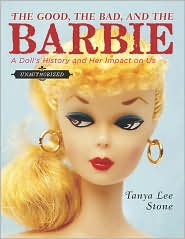 The Good, The Bad, and the Barbie: A Doll's History and Her Impact On Us. Tanya Lee Stone. 2010. October 2010. Penguin. 144 pages.
The Good, The Bad, and the Barbie: A Doll's History and Her Impact On Us. Tanya Lee Stone. 2010. October 2010. Penguin. 144 pages.
From the foreword (by Meg Cabot): When I was six, I wanted a Barbie more than I can remember ever wanting anything in my life.
From the prologue: It was a very pink year.
From chapter one: Ruth Handler looked absolutely nothing like a Barbie doll. And she did not aspire to.
Tanya Lee Stone's nonfiction book on Barbie is balanced and objective. She gives every side a voice. So you'll find those who think Barbie is evil, those who loved to destroy Barbie, mutilate her, those who strongly believe Barbie is detrimental to self-esteem. But. You'll also hear stories from those who loved Barbie. In some cases, loved, loved, loved Barbie. Stories about what they loved best about her, how they played with her, how having Barbie helped their imaginations, how Barbie is an inspiration--but not only in the way you might think!
So what should you expect from this one? A bit of history and context. A look at how Ruth Handler helped create the Mattel toy company. A look at how Ruth Handler created Barbie. Readers also learn about the dolls production through the decades. How the culture has impacted Barbie's design--everything from hair color, eye color, skin color, body design, to her clothes and other accessories. There is a whole chapter on the portrayal of race/ethnicity. Readers also learn a little bit about some of Barbie's friends and relations.
But the book goes beyond the doll and her design. The book intimately looks at how she has been played with by children everywhere. How she has been loved. How she has been hated. How she's been given hair cuts. How some have enjoyed making their own clothes for Barbie. And how others feel that only "store bought" clothes will do for their doll. Tonya Lee Stone sprinkles her text with quotes which was a nice touch.
What seems obvious to me--and maybe to you too--is that Barbie is who you want her to be. You have a large role in defining who she is. Not everyone feels that way, of course. Many would argue that there is only one "Barbie" way to be. But I'd disagree. (Perhaps the first step is to never have a Barbie named Barbie. Barbies are given life, given personality, by their owners. You are the one writing her story.)
Did I like this one? Yes and no. I found it disturbing in places. I found it ugly in places. I did NOT want to read about people taking pleasure in torturing, mutilating, abusing Barbie. But. There were places I liked it. I liked, for example, reading about how much Megan McCafferty credits Barbie for helping her develop her storytelling.
© Becky Laney of Becky's Book Reviews
Shipwreck at the Bottom of the World: The Extraordinary True Story of Shackleton and the Endurance. Jennifer Armstrong. 1998. Random House. 144 pages.
Just imagine yourself in the most hostile place on earth. It's not the Sahara or the Gobi Desert. It's not the Arctic. The most hostile place on earth is the Antarctic, the location of the South Pole--what's the difference? The Arctic is mostly water--with ice on top, of course--and that ice is never more than a few feet thick. But under the South Pole lies a continent that supports glaciers up to two miles in depth. Almost the entire southern continent is covered by ice. The mammoth icecap presses down so heavily that it actually distorts the shape of the earth. The ice never melts; it clings to the bottom of the world, spawning winds, storms, and weather that affect the whole planet.Shipwreck at the Bottom of the World is an amazing survival story. Against all odds, these men--twenty-eight in all--led by Ernest Shackleton survived the harshest conditions imaginable. Of course, when these men set sail they had big dreams. They wanted to become the first team of explorers to cross Antarctica. But life doesn't always go as planned. And when their ship became trapped by ice, their mission changed. To survive was all that mattered.
I loved this book. I did. There is a very good reason it won the Orbis Pictus Award for Outstanding Nonfiction. It fascinates from cover to cover. Amazing writing--storytelling. The book is so engaging, so compelling, so powerful, so amazing. I think the story would be gripping no matter who told it. But I do think that Jennifer Armstrong did a wonderful job in painting a very human picture of Shackleton and his crew. I think the ending was beautiful--very moving! This one is a book I think
everyone should read.
© Becky Laney of
Becky's Book Reviews

They Called Themselves the K.K.K: The Birth of an American Terrorist Group. Susan Campbell Bartoletti. 2010. August 2010. Houghton Mifflin Harcourt. 172 pages.
In the spring of 1865, as rain softened the hard ground, plenty of work was found for every pair of hands on the Williams plantation in Camden, Arkansas, despite the Civil War, which was still raging at the end of its fourth year.
Powerful and compelling. That's how I'd describe Susan Campbell Bartoletti's newest work of nonfiction. The subject matter is difficult. It isn't easy to read about the K.K.K. To read about how they terrorized blacks and the whites who dared support their newly given rights--preachers, teachers, etc. But. It's a well-written, well-researched book that is a very moving account of a difficult time in American history--the Reconstruction of the South. Much of the book is spent on these early years of the Ku Klux Klan. Though the last chapter brings us through the twentieth century to modern times.
It was informative, fascinating, and haunting. What I appreciated most was the use of primary sources. How Bartoletti uses oral histories of former slaves (most taken from the 1930s) throughout her book. Often these quotes are accompanied by a photograph. It really makes a powerful statement. To put a name, a face to a story. And that is exactly what Bartoletti does best. She tells the story--the very human story--of the men, women, and children whose lives were most impacted by the Ku Klux Klan.
© Becky Laney of Becky's Book Reviews

Liberty or Death: The Surprising Story of Runaway Slaves Who Sided With the British During The American Revolution. By Margaret Whitman Blair. 2010. National Geographic. 64 pages.
Liberty and freedom are not the sole province of any set of people anywhere. The fact that three of the first four Presidents of our nation were slaveholders would seem to suggest that our nation was founded in slavery.
I'll be honest. I was mostly interested in Liberty Or Death because I've been fascinated by a few recent fictional titles on this subject: Octavian Nothing volume 1 and 2 by M.T. Anderson, and Chains by Laurie Halse Anderson. (Forge, the sequel to Chains, releases this fall.)
I'm glad I read Liberty or Death. I found it interesting and informative. It mentions how African Americans fought on both sides of the War. How some chose to trust the British. How some chose to trust the Americans. It not only covers the years of the American Revolution, it tells the bigger story. What happened to these former slaves who fought for the British after the defeat. Where they settled. What kind of lives they led. Their continued struggles.
I found the book very engaging--very compelling.
© Becky Laney of Becky's Book Reviews
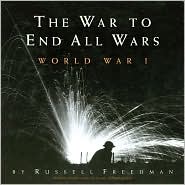
The War to End All Wars: World War I. Russell Freedman. 2010. August 2010. Houghton Mifflin Harcourt. 192 pages.
Those who lived through World War I called it the Great War because of its massive scale: some two dozen countries joined the conflict, which swept across continents and killed perhaps 20 million people.
I'm not as familiar with World War I as I am with World War II. I've read less nonfiction and fiction books on this war. (The fiction book that immediately comes to mind--for me--is Rilla of Ingleside. Oh, how I love Rilla of Ingleside. And last year I read Helen Frost's Crossing Stones, which was amazing.) But. When I saw that Russell Freedman's new book was on World War I, well, I knew I just had to read it.
It did not disappoint. It was wonderful. It was everything I was expecting. It was informative, fascinating, and oh-so-compelling. One of my favorite aspects of the book was Freedman's use of quotes. How he weaves together primary sources. These details make the soldiers' experiences so vivid. Heartbreaking but vivid.
Here is an example:
On the Western Front alone, more than a half million men lost their lives in 1916. Second Lieutenant Alfred Joubaire, serving with the French 124th Regiment at Verdun, made the following entry in his diary on May 23, 1916: "Humanity is mad! It must be mad to do what it is doing. What a massacre. What scenes of horror and carnage! I cannot find words to translate my impressions. Hell cannot be so terrible. Men are mad!"
That was the last entry in Alfred Joubaire's diary. That day, or possibly the next, his life was ended by a German shell. He was twenty-one. (101)
The book follows each year of the war. From the assassination of Archduke Franz Ferdinand to the peace treaty and the formation of the League of Nations. The final chapter, "Losing the Peace" takes readers from the close of World War I to the beginning of World War II showing readers how these two wars are connected.
The book is compelling and intense. Freedman's writing is informative, clear (easy-to-follow), and fascinating. He includes just the right amount of detail. I never expected to find a book about battles, strategy, and politics so interesting, so compelling.
The book has plenty of photographs (black-and-white) too. And maps.
© Becky Laney of
Becky's Book Reviews
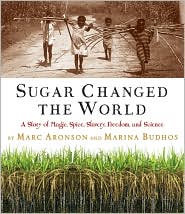
Sugar Changed the World: A Story of Magic, Spice, Slavery, Freedom and Science. Marc Aronson and Marina Budhos. 2010. November 2010. Houghton Mifflin Harcourt. 176 pages.
It was a typically hot, dry day in Jerusalem.
Before reading this book, I had not given much thought to the history of sugar. I had not made the connection between sugar and some of the cruel injustices of the world. I speak of the connection between sugar and slavery.
"Sugar created a hunger, a need, which swept from one corner of the world to another, bringing the most terrible misery and destruction, but then, too, the most inspiring ideas of liberty.
Sugar changed the world." (8)
The book is divided into four sections: "From Magic to Spice," "Hell," "Freedom," and "Back to Our Stories: New Workers, New Sugar." The book spans the centuries and explores many different cultures and societies.
I found the book rich in detail. I would definitely recommend this one.
© Becky Laney of
Becky's Book Reviews
 Combining an informative, eloquently written text with a wealth of relevant photographs, Russell Freedman’s The War to End All Wars is a magnificent overview of World War I.
Combining an informative, eloquently written text with a wealth of relevant photographs, Russell Freedman’s The War to End All Wars is a magnificent overview of World War I.
The scope of The War to End All Wars is wide, but there’s a logical progression to the way Freedman lays out information. Beginning with the assassination of Archduke Franz Ferdinand and the alliances and rivalries among various European countries in 1914, Freedman discusses the chain of events that led to the war in an engaging style that is both elegant and authoritative. It is not stuffy or bland, and the narrative is written with enough clarity that there is no need for sidebars or extraneous text boxes to explain or emphasize details.
And so Europe was caught up in a war that few had expected and almost no one wanted. Even today, historians continue to debate the tangled and confusing causes of the conflict, the series of accidents, blunders, and misunderstandings that swept the nations of Europe toward war in the summer of 1914, whether war might have been avoided, and which persons or nations were most responsible. Wars in the past had often been caused by countries seeking more land or natural resources, or acting out of suspicion and fear of their rivals. And once a country is fully armed and poised to attack, war, it seems, is hard to avoid.
The events that unfolded as Europe careened toward catastrophe appeared to defy logic and common sense. Austria had wanted to punish Serbia, and then, one by one, other nations were drawn into the quarrel. To support Austria in its conflict with Russia over Serbia, Germany had attacked France by invading Belgium. And Britain had declared a state of war throughout the vast British Empire. In the rush of events, the Kingdom of Serbia, supposedly the cause of the war, had almost been forgotten.
Each nation believed that it was fighting a defensive war forced upon it by someone else. And each army was convinced that it could defeat its enemies within a few months and that the troops would be home by Christmas. (p. 18-19 of ARC; text may change upon publication)
In addition to examining the important battles of the war, Freedman discusses some of the technological advances—both leading up to and during the war—that distinguished World War I from previous wars, as well as their impact on the grimness of trench warfare. This helps add context to the coverage of the fighting, particularly important because of how Freedman beautifully integrates first person accounts from rulers and diplomats and, most of all, soldiers into his narrative. These quotes, affecting and mournful and tragic (just one brief example, from a longer journal entry by Henri Desagneaux, a French lieutenant: “Our heads are buzzing, we have had enough…. Numb and dazed, without saying a word, and with our hearts pounding, we await the shell that will destroy us.” p. 89 of ARC), give The War to End All Wars additional depth and readers an intimate glimpse at what the war was like for those involved in it. Freedman concludes his narrative with a look at the end of the war and how it set the stage for World War II, among other things.
Although Freedman packs a considerable amount of information into the text, there are some omissions that were obvious even to me, someone who has probably picked up more information about World War I from historical mysteries than can I recall from AP European History. More attention is paid to the Western Front than the Eastern Front, and because Freedman spent some time covering the mood on the homefront at the start of the war, I was surprised that he did not revisit this topic as the war went on. Nevertheless, these are minor criticisms overall. As this is

Surviving the Angel of Death. The Story of a Mengele Twin in Auschwitz. Eva Mozes Kor and Lisa Rojany Buccieri. 2009. [November 2009]. Tanglewood Press. 175 pages.
The doors of the train car were thrown all the way open for the first time in many days, the light of day shining upon us like a blessing.
Such a good book! It is a compelling story about the Holocaust. Eva and Miriam are twins. And the fact that they're twins, it saves their lives. Because they are twins, they are not sent to the gas chambers upon arrival. (Like the rest of their family.) Because they are twins, they join the other sets of twins in the camp. They become part of Dr. Josef Mengele's scientific experiments.
Not that surviving was easy. Their heads were still shaved. Their arms were still tattooed. They still faced starvation and malnutrition. They were still plagued by lice. And dysentery. But they were in some ways 'the lucky ones.' If you consider it luck to be an experiment, a human guinea pig.
I took those shots as the price we had to pay to survive, we gave them our blood, our bodies, our pride, our dignity, and in turn, they let us live one more day. I cannot remember a single twin who did not cooperate.
In those days we didn't know what the experiments were for or what we were injected with. Later we found out that Dr. Mengele purposely gave some twins dangerous, life-threatening diseases such as scarlet fever... (46)
Eva was surrounded by death and despair. (There was a very thin line separating the living and the dead.) As she says in chapter five, "Being in Auschwitz was like being in a car accident every single day. Every single day something terrifying happened" (43). But Eva clung to hope, clung to her sister.
It was said at the time that six sets of twins had gone to that lab and been killed. I never witnessed anyone being killed; I only knew that some of the twins disappeared. But I did eventually learn that the rumors were correct, that twins were dying from some of the experiments. We were told they had become "very sick." Then Mengele would simply replace them with fresh sets of twins who had just arrived on transport trains. That is how even the most privileged prisoners at Auschwitz were viewed. Not even Mengele's favorites were treated as humans. We were replaceable. Disposable. (46)
Did you know that Joseph Mengele experimented on twins? I knew a very little about him--knew that he experimented on humans during World War II. That he had a twisted interest in medicine and science. But I didn't know about his interest in twins.
I found this one to be incredibly compelling. The narrative to be simple and straight forward yet powerful. I definitely recommend this one!
© Becky Laney of
Becky's Book Reviews
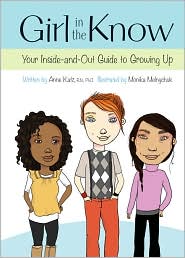
Girl in the Know. Your Inside-and-Out Guide to Growing Up. By Anne Katz, R.N., Ph.D. Illustrated by Monika Melnychuk. 2010. March 2010. Kids Can Press. 112 pages.
You're growing up, and that means lots of first -- first period, first bra, first kiss, just to name a few.
What you see is what you get. Girl in the Know is a book about puberty. This one doesn't just focus on the physical, however, it also addresses emotional issues as well. Family. Friends. Crushes. Bullies. Eating disorders. So if you're looking for a book about health, hygiene, diet, and exercise, then this might be just right for you (or someone you love).
I don't love the illustrations. But. I can see how this would be difficult to get just right either way. Because if you use photographs, then the book becomes dated even more quickly.
© Becky Laney of Becky's Book Reviews

An American Plague: The True and Terrifying Story of the Yellow Fever Epidemic of 1793. By Jim Murpy. 2003. Houghton Mifflin Harcourt. 176 pages.
Saturday, August 3, 1793. The sun came up, as it had every day since the end of May, bright, hot, and unrelenting.
An American Plague is such a fascinating read! I'd definitely recommend this one to skeptics who think nonfiction has to be boring. To those who think nonfiction couldn't possibly be as well-written, as compelling as fiction. This one is definitely both.
The book tells the story of a town crippled by plague, by yellow fever. The city is Philadelphia. And since Philadelphia was the capital of the time, the government was essentially shut down the weeks and months the plague spread its terror. Not everyone in an official position fled the city. Not everyone who had prestige and wealth fled the city. But many did. Who was left to run the city? Who was there to tend the sick? Who was there to bury the dead? Who kept the city going? Read and see for yourself in Jim Murphy's An American Plague.
Did you notice all the award love? This one was a finalist in the National Book Awards, a Newbery Honor, and the winner of the Robert F. Sibert Award.
© Becky Laney of Becky's Book Reviews

Blizzard! The Storm That Changed America. By Jim Murphy. 2000. Scholastic. 136 pages.
On Saturday, March 10, 1888, the weather from Maine on down to Maryland was clear and unusually warm.
Oh what a difference a day makes! Reading Blizzard! made me cold...and hungry...and thankful to be living in the modern world. Not that weather forecasters always get it right. Even now. But still. Jim Murphy's Blizzard! is about a great snowstorm--the great snowstorm of 1888. It's focus is mainly on the East Coast, mainly on New York City. Though the great storm was widespread--very widespread. Still, it seemed to hit bigger cities harder. Usually because these "modern" cities had grown more dependent on modern conveniences like daily deliveries.
What did I enjoy about this one? Many things. I found an interesting story, a well-crafted narrative that was engaging. It was rich in detail. (But not in a boring fact-heavy way.) I appreciated Murphy's research. He pulled together some interesting stories, and relied on many different primary materials. There was an immediacy to it that kept me turning pages. There were things that just amazed me. Of course there were parts of this one that were devastating. But. Bad things do happen. Especially in extreme situations like this one. I think the story that effected me most was the story of the Chapell family. It was personal stories like this one that made this one so compelling, so real.
© Becky Laney of Becky's Book Reviews
View Next 8 Posts



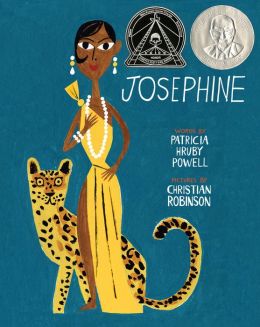
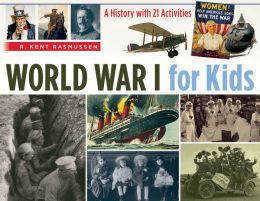

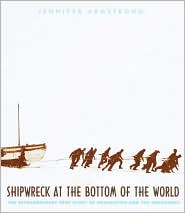

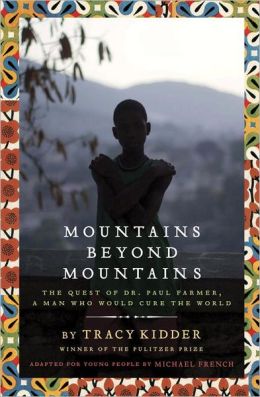
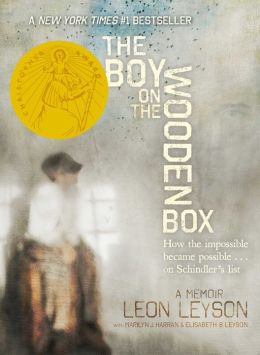
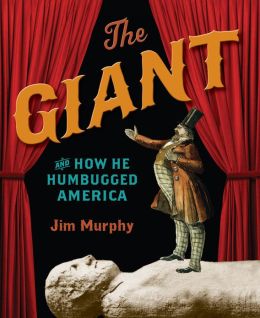


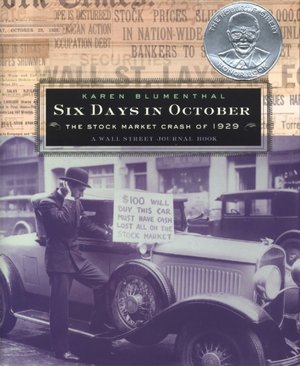









 Combining an informative, eloquently written text with a wealth of relevant photographs, Russell Freedman’s The War to End All Wars is a magnificent overview of World War I.
Combining an informative, eloquently written text with a wealth of relevant photographs, Russell Freedman’s The War to End All Wars is a magnificent overview of World War I.



Carry forward your wishes through the contents of the address www.flowerdeliveryinghaziabad.com that comes with lots of gift items like flowers, fruit baskets, chocolates, cakes and lots of other items. You can celebrate any occasion like birthday, wedding and anniversary along with these gifts.